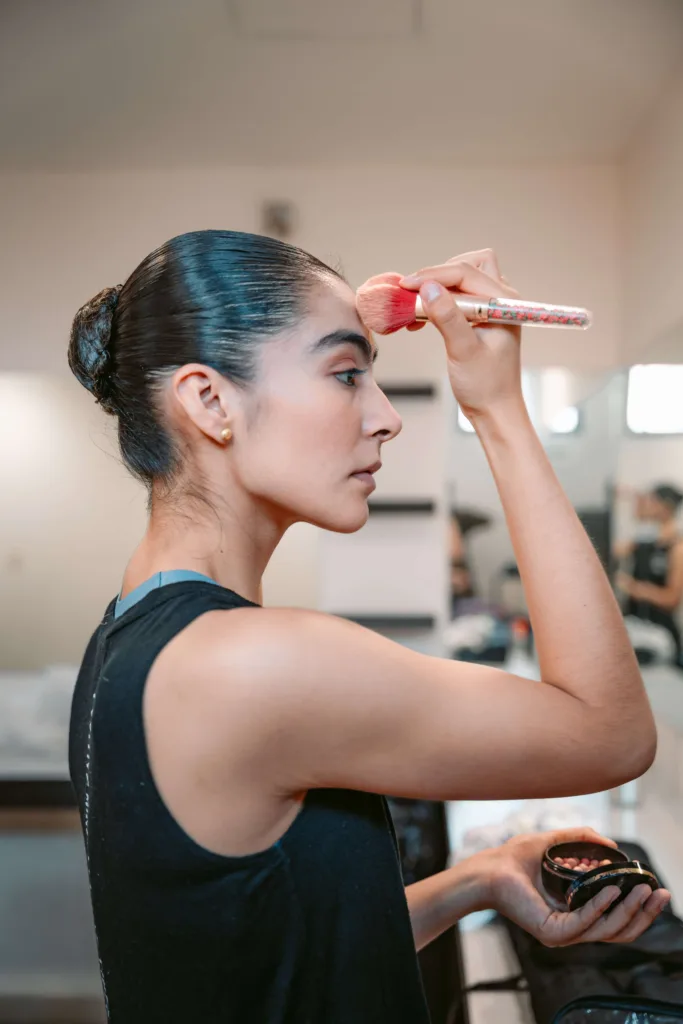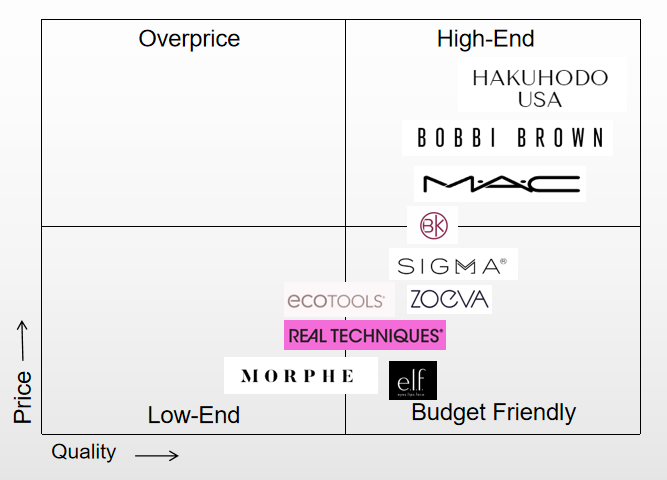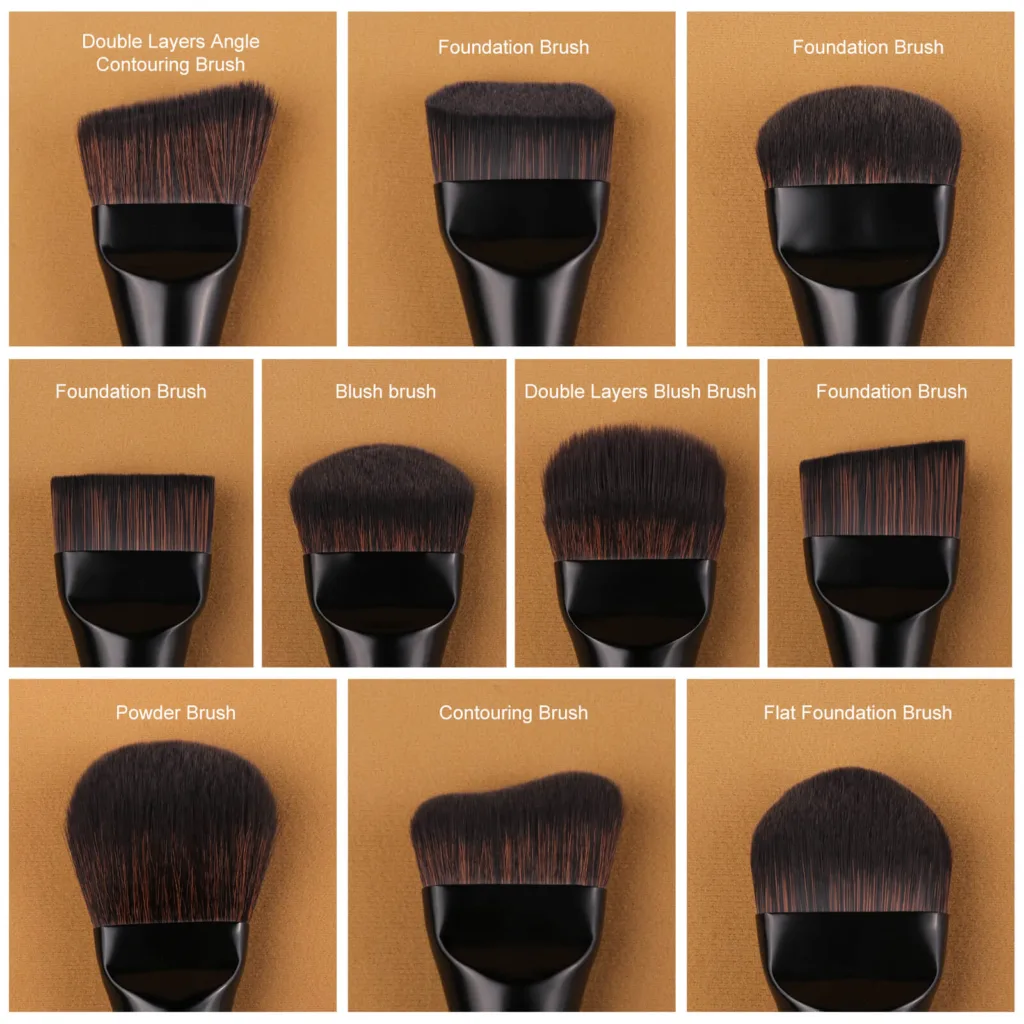Are you passionate about makeup and want to turn your hobby into a successful business? Launching your own makeup brush line is an exciting venture that can be both creatively fulfilling and financially rewarding. But where do you start? In this article, we will guide you through the essential steps to help you bring your dream makeup brush line to life. From developing a brand identity to sourcing high-quality materials, we’ll show you how to create a collection that stands out in the competitive beauty market.

Table of Contents:
- Budget Plan
- Market research and identifying your target audience
- Developing a unique selling proposition (USP)
- Creating a business plan for your makeup brush line
- Planning Your Product Line
- Sourcing And Manufacturing
- Branding and packaging for your makeup brush line
- Pricing and costing your products
- Creating an Online Store
- Marketing and promoting your makeup brush line
How much does it cost to start a makeup brush line?
Product sourcing and marketing are the main costs. Starting with a limited number of products and targeting a small niche to kick off would be recommended. It’s crucial to conduct thorough market research and make a business plan before getting started.
| Expense Category | Description | Estimated Cost |
| Product Development | Designing, prototyping, and sampling the brushes. | $200 – $1000 |
| Sourcing/Manufacturing | Costs to produce the initial batch of brushes. | $500 – $5000 |
| Branding | Logo, design, and packaging costs. | $200 – $1000 |
| Website/Online Store | Setting up and maintaining a website or eCommerce platform. | $20 – $200/month |
| Product Photography | Professional photos of your products for the website. | $300 – $1000 |
| Marketing | Social media ads, influencer collaborations, email marketing. | $500 – $2000 |
| Legal/Registration | Business registration, trademarks, and legal fees. | $200 – $1000 |
| Shipping | Costs for shipping products to customers. | Variable |
| Customer Service | Tools or platforms for customer support. | $0 – $200/month |
| Miscellaneous | Unforeseen expenses and contingencies. | $100 – $500 |
Market research and identifying your target audience
Understanding the current trends, consumer preferences, and competition in the beauty industry will help you position your makeup brush line effectively.
Examine successful brands like Real Techniques and MAC, analyzing their strategies, target audience, and pricing. Identify gaps in the market that you can fill.
Look for emerging trends and niches that align with your vision and expertise. Is there a demand for eco-friendly makeup brushes? Or maybe there’s a need for affordable, high-quality brushes on the market? By identifying these gaps, you can tailor your product offering to meet the needs of your target audience.
Once you have a clear understanding of the market, it’s time to define your target audience. Who are your ideal customers? Are they professional makeup artists, beauty enthusiasts, or both? Consider their demographics, preferences, and buying behavior. This information will guide your product development, branding, and marketing strategies, ensuring you create a makeup brush line that resonates with your target audience.

Developing a unique selling proposition (USP)
To stand out in the competitive beauty market, you need to develop a unique selling proposition (USP) for your makeup brush line. Your USP is what sets you apart from your competitors and provides a compelling reason for customers to choose your brushes.
Start by identifying the unique features or benefits of your makeup brushes. Do they use innovative technology? Are they cruelty-free or vegan? Do they offer a specific application technique? Highlight these unique qualities and communicate them clearly in your marketing materials and product packaging. For example, Sephora Collection released a line of charcoal- and collagen-infused brushes targeted at customers interested in skincare.
Additionally, consider the overall brand experience you want to create for your customers. Are you passionate about empowering women through makeup? Do you want to promote inclusivity and diversity? Incorporate these values into your brand messaging and make them an integral part of your USP. By developing a strong and authentic USP, you’ll attract customers who resonate with your brand and build long-term loyalty.

Creating a business plan for your makeup brush line
A well-crafted business plan is crucial for the success of your makeup brush line. It serves as a roadmap, outlining your goals, strategies, and financial projections. A comprehensive business plan will not only help you stay organized but also attract potential investors or secure loans if needed.
Start by defining your business objectives. What do you want to achieve with your makeup brush line? Set specific, measurable, attainable, relevant, and time-bound (SMART) goals. For example, you may aim to reach a certain revenue target within the first year or establish partnerships with influential beauty influencers.
Next, outline your marketing and sales strategies. How will you promote and distribute your makeup brushes? Will you focus on e-commerce, sell through retail stores, or both? Consider the most effective channels to reach your target audience and outline your marketing budget.
Finally, include a detailed financial plan in your business plan. Estimate your startup costs, monthly expenses, and projected revenue. This will help you determine the pricing of your makeup brushes and ensure your business remains profitable. Don’t forget to factor in potential contingencies and plan for future growth.
Planning Your Product Line
- Variety and Functionality: Look at brands for inspiration in variety. Develop products that stand out from the competition. This could be through innovative design, unique materials, or other features that make your products different. For example,cruelty-free, ultra-soft, and durable bristles with ergonomic handles.
- Quality and Material: Quality is key when it comes to makeup brushes. Decide on the bristle material and handle design. Consider the popularity of synthetic bristles due to cruelty-free concerns.

Sourcing and Manufacturing
Finding a reliable manufacturerfor your makeup brushes is crucial to ensuring the quality and consistency of your products. Here are some steps to help you find the right manufacturer:
- Research potential manufacturers: Start by researching and compiling a list of potential manufacturers. Look for manufacturers with a proven track record in producing high-quality makeup brushes. Read reviews, check their portfolio, and request samples if possible.
- Quality assurance: Inquire about the manufacturer’s quality control processes and certifications. Ensure they have strict quality standards in place and perform thorough inspections throughout the manufacturing process.
- Customization capabilities: Discuss your customization requirements with the manufacturer to ensure they can meet your specifications. Ask about their ability to handle custom handle designs, bristle materials, and packaging options.
- Communication and responsiveness: Evaluate the manufacturer’s communication skills and responsiveness. A reliable manufacturer should be prompt in answering your inquiries, providing updates, and addressing any concerns or issues that may arise.
- Pricing and minimum order quantities: Request detailed pricing information from each manufacturer, including any additional costs for customization or packaging. Compare the prices with the quality and services offered to make an informed decision. Additionally, consider the minimum order quantities required by each manufacturer and ensure they align with your business needs.
- By following these steps, you can find a reliable private label manufacturerthat will help bring your vision to life and deliver high-quality makeup brushes for your brand. The next section will explore marketing and selling private label makeup brushes.

Branding and packaging for your makeup brush line
Branding plays a crucial role in differentiating your makeup brush line from competitors and attracting customers. Your brand identity should be reflected in every aspect of your business, from your logo and packaging to your website and social media presence.
Start by developing a strong brand name and logo that resonates with your target audience. Your brand name should be memorable, easy to pronounce, and reflective of your brand values. The logo should be visually appealing and convey the essence of your makeup brush line.
Next, create cohesive and visually appealing packaging for your brushes. The packaging should not only protect the brushes but also serve as a reflection of your brand. Consider using high-quality materials, eye-catching designs, and eco-friendly packaging options if it aligns with your brand values.
Extend your branding efforts to your website, social media platforms, and marketing materials. Use consistent colors, fonts, and imagery to create a cohesive brand experience. Craft compelling product descriptions and engaging content that showcases the benefits and unique features of your brushes.
Pricing and cost of your products
Determining the right pricing strategy for your makeup brushes is essential to ensure profitability while remaining competitive in the market. You need to consider factors such as production costs, overhead expenses, desired profit margin, and perceived value.
Start by calculating your production costs, including the cost of materials, manufacturing, packaging, and shipping. Factor in any additional expenses, such as marketing, branding, and employee wages. Consider the desired profit margin and compare it with the market prices of similar makeup brushes.
Additionally, evaluate the perceived value of your brushes in the market. Are they positioned as a luxury brand or a more affordable option? Analyze your target audience’s purchasing power and willingness to pay for your brushes. Conduct market research to gather insights on pricing trends and consumer preferences.
Consider implementing a tiered pricing strategy to cater to different customer segments. Offer different brush sets or individual brushes at varying price points to appeal to a wider range of customers. Monitor your pricing strategy regularly and make adjustments as necessary to maximize profitability and maintain a competitive edge.
Creating an Online Store
- Platform Selection: Consider using Shopify for a user-friendly and customizable online store.
- Product Photography: Invest in high-quality images, showcasing the details and design of your brushes.
Marketing and promoting your makeup brush line
To build brand awareness and attract customers to your makeup brush line, you need to implement effective marketing and promotional strategies. Here are some key approaches to consider:
1. Social media marketing: Leverage popular social media platforms like Instagram, YouTube, and TikTok to showcase your brushes and engage with your target audience. Create visually appealing content, collaborate with beauty influencers, and run targeted ads to expand your reach.
2. Influencer partnerships: Partner with influential beauty bloggers, makeup artists, and social media influencers who align with your brand values. Send them your brushes for reviews, tutorials, and sponsored content. Their endorsements can significantly boost your brand visibility and credibility.
3. Content marketing: Create valuable and engaging content related to makeup application, beauty tips, and trends. Publish blog articles, video tutorials, and social media posts that provide value to your target audience. This will position you as an authority in the industry and attract organic traffic to your website.
4. Email marketing: Build an email list of interested customers and provide them with exclusive offers, product updates, and beauty tips. Nurture your email subscribers and encourage them to become repeat customers.
5. Participate in trade shows and beauty events: Showcase your makeup brush line at trade shows, beauty expos, and industry events. This will allow you to directly interact with potential customers, beauty professionals, and industry insiders.
6. Collaborations and giveaways: Partner with complementary beauty brands or influencers for collaborations and giveaways. This can help increase your brand exposure and attract new customers.
Remember to track and analyze the performance of your marketing efforts. Use analytics tools to measure website traffic, social media engagement, and conversion rates. This data will help you refine your marketing strategies and optimize your promotional activities.
How Shangyang Can Help Your Makeup Business Thrive
If you’re looking to start or scale up your makeup business, Shangyang can be a valuable partner by providing you with:
- High-Quality Tools: Their core strength lies in creating well-designed and well-made brushes and applicators. These are essential tools for applying makeup flawlessly, and Shangyang’s reputation ensures you’re getting top-notch products that will elevate your brand’s image.
- Private Label Options: Shangyang offers private label services, which means you can customize their existing tools with your own branding. This allows you to create your own unique brush sets or applicator lines without the hassle of starting from scratch on the manufacturing side.
- Manufacturing Expertise: Leveraging their experience and established production lines, Shangyang can help you bring your makeup tool vision to life, especially if you’re looking to scale up your business.
In short, Shangyang equips you with the tools to elevate the application experience for your makeup products, which can translate to happier customers and a stronger brand identity.
More To Read:





